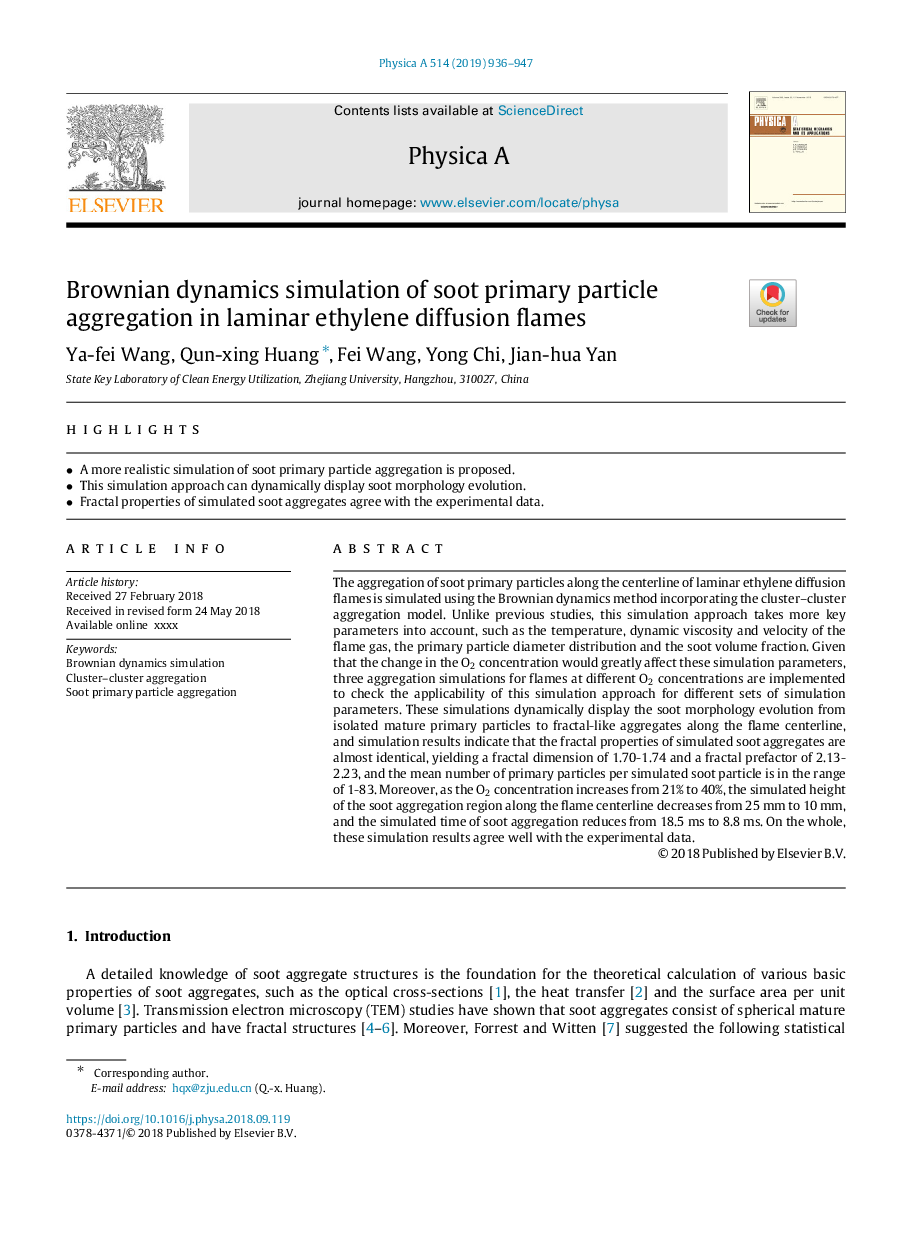| Article ID | Journal | Published Year | Pages | File Type |
|---|---|---|---|---|
| 11023285 | Physica A: Statistical Mechanics and its Applications | 2019 | 12 Pages |
Abstract
The aggregation of soot primary particles along the centerline of laminar ethylene diffusion flames is simulated using the Brownian dynamics method incorporating the cluster-cluster aggregation model. Unlike previous studies, this simulation approach takes more key parameters into account, such as the temperature, dynamic viscosity and velocity of the flame gas, the primary particle diameter distribution and the soot volume fraction. Given that the change in the O2 concentration would greatly affect these simulation parameters, three aggregation simulations for flames at different O2 concentrations are implemented to check the applicability of this simulation approach for different sets of simulation parameters. These simulations dynamically display the soot morphology evolution from isolated mature primary particles to fractal-like aggregates along the flame centerline, and simulation results indicate that the fractal properties of simulated soot aggregates are almost identical, yielding a fractal dimension of 1.70-1.74 and a fractal prefactor of 2.13-2.23, and the mean number of primary particles per simulated soot particle is in the range of 1-83. Moreover, as the O2 concentration increases from 21% to 40%, the simulated height of the soot aggregation region along the flame centerline decreases from 25Â mm to 10Â mm, and the simulated time of soot aggregation reduces from 18.5 ms to 8.8 ms. On the whole, these simulation results agree well with the experimental data.
Related Topics
Physical Sciences and Engineering
Mathematics
Mathematical Physics
Authors
Ya-fei Wang, Qun-xing Huang, Fei Wang, Yong Chi, Jian-hua Yan,
